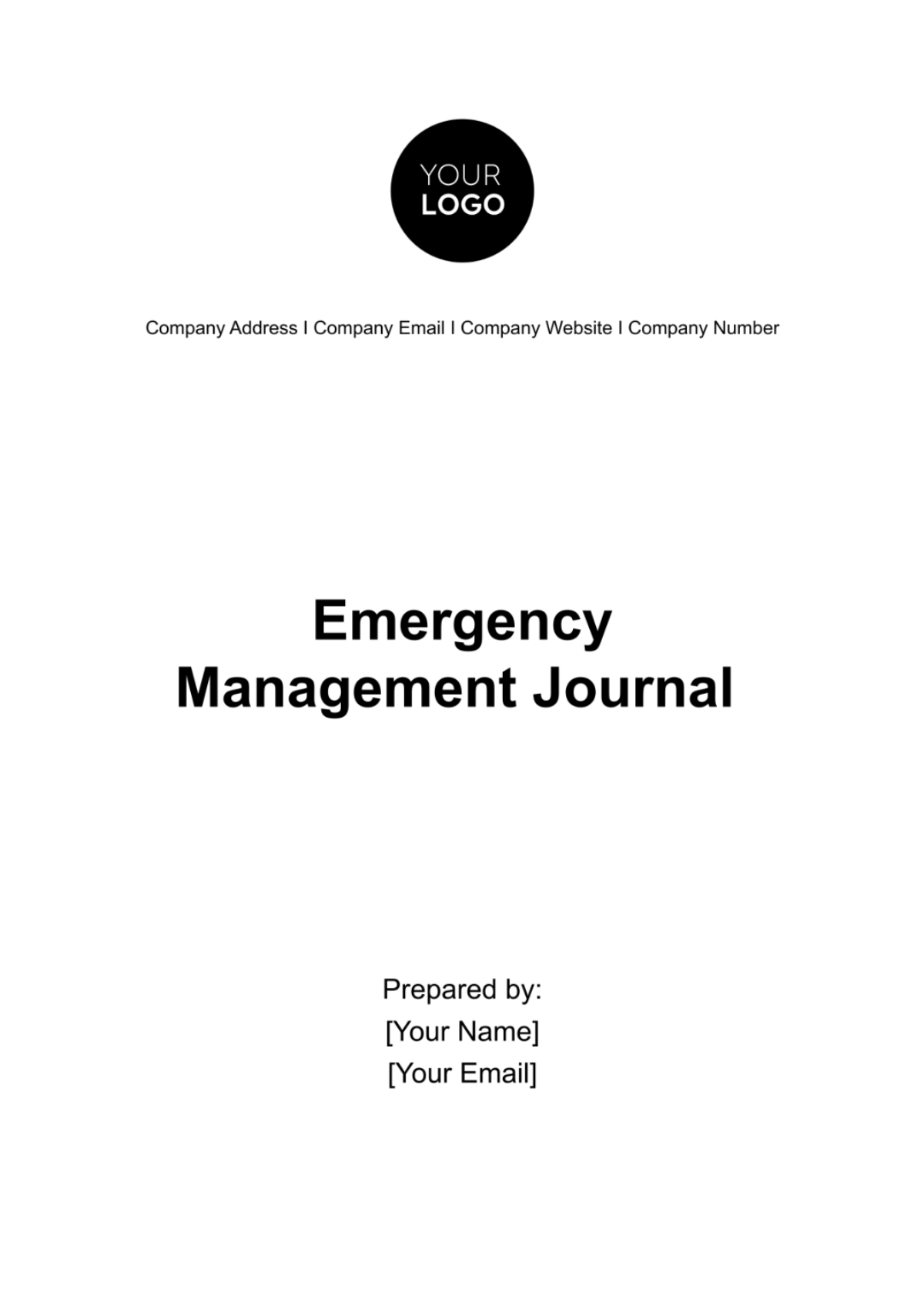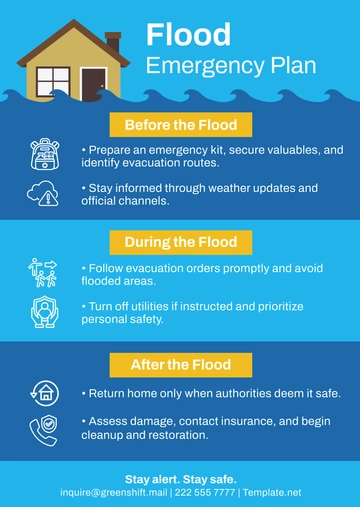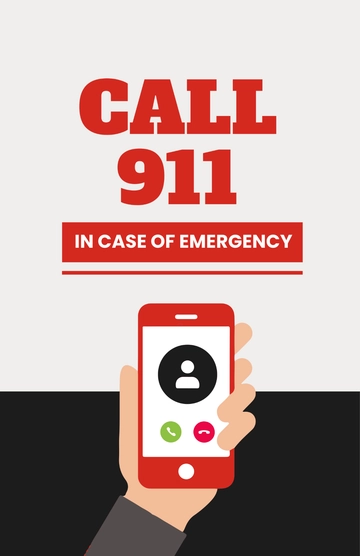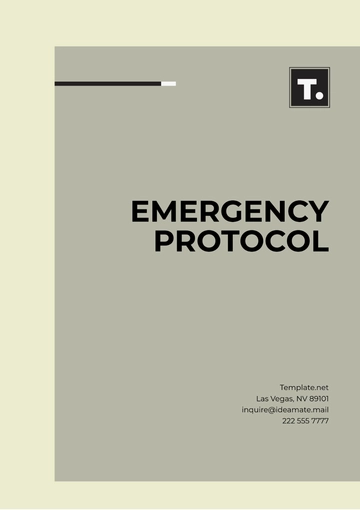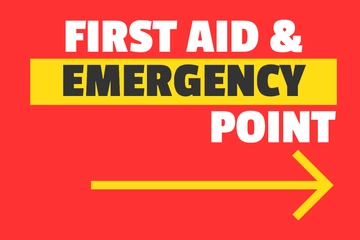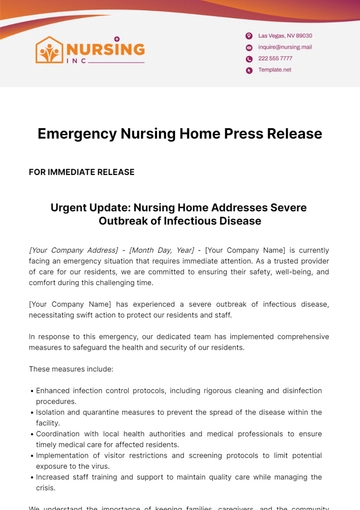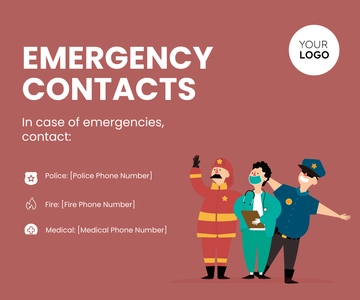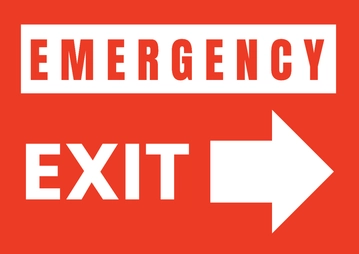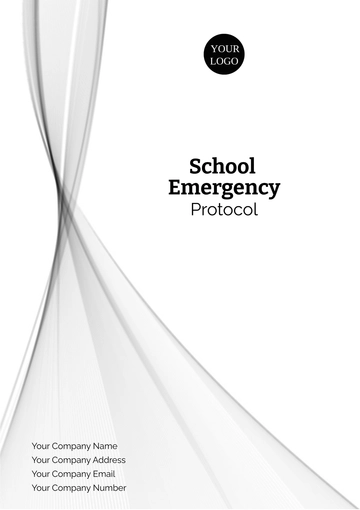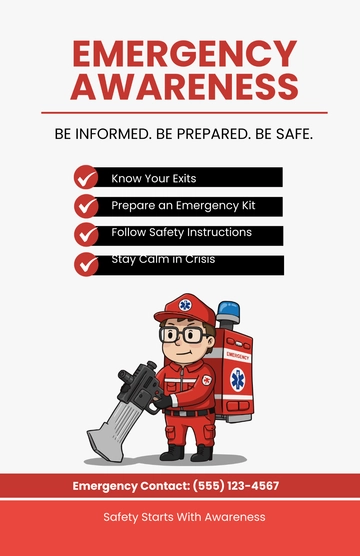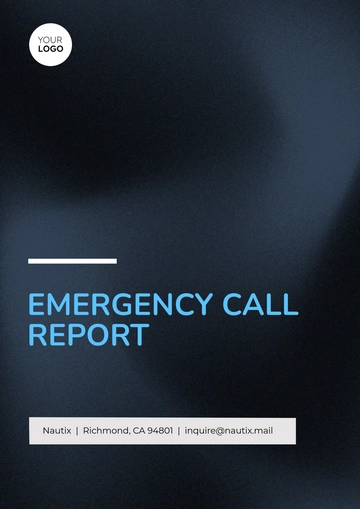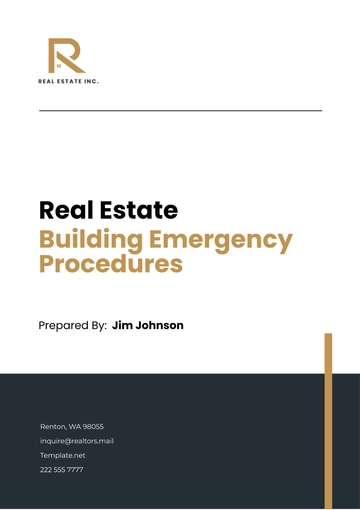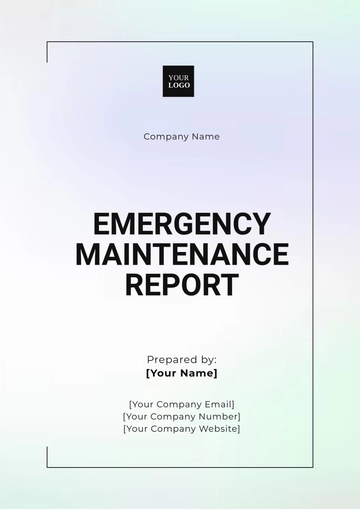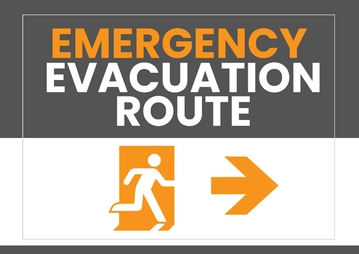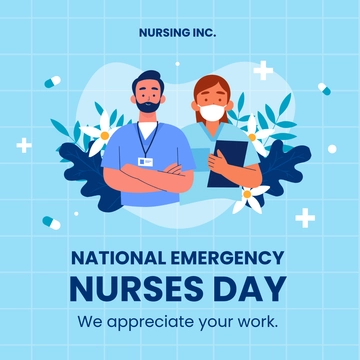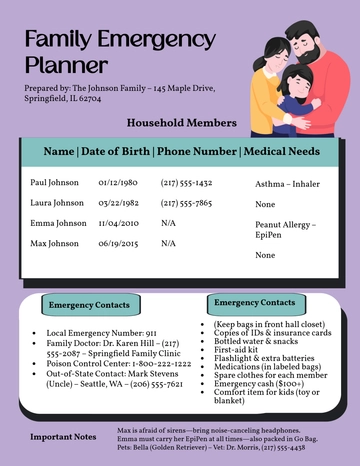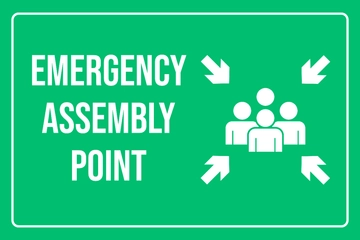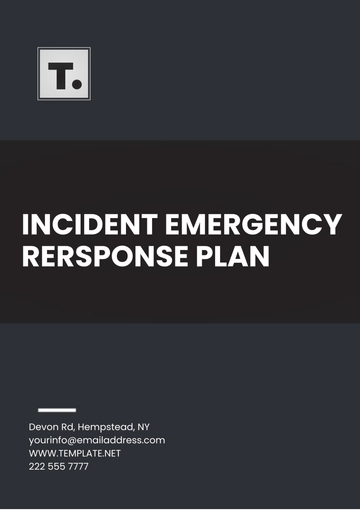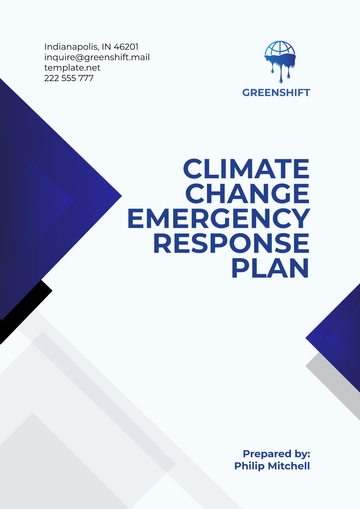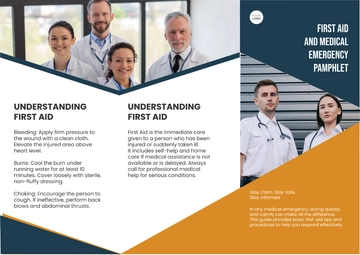Emergency Management Journal
I. Introduction
Staying informed and up-to-date is important, and this journal is dedicated to providing you with valuable insights, research, and best practices to ensure the safety and well-being of individuals and communities. In this journal, you will find information covering a wide range of topics, including the latest research findings, case studies, legislative updates, and expert commentary. We invite you to explore the contents of this journal and join us in our commitment to safeguarding lives and promoting resilience in the face of adversity.
II. Editorial Board
Meet the Experts Shaping Emergency Management
Role | Name | Contact Information |
Editor-in-Chief | [Name] | [Number] / [Email] |
| | |
| | |
| | |
| | |
| | |
| | |
| | |
| | |
About the Editorial Board
Our esteemed editorial board comprises experienced professionals and subject matter experts in the field of emergency management. They bring a wealth of knowledge and expertise to guide the content and direction of this management journal. Our board members ensure that the journal maintains the highest standards of quality, accuracy, and relevance to meet the needs of our readers.
Meet the Editor-in-Chief
[Your Name], the Editor-in-Chief, is a distinguished figure in the field of health and safety. With a strong commitment to upholding US legal and regulatory standards, [Your Name] is dedicated to ensuring that every issue of this journal serves as a valuable resource for professionals striving to enhance emergency management practices.
Editorial Board Members
Our editorial board members are leading practitioners and thought leaders who contribute their expertise to shape the content of this journal. Their diverse perspectives and insights help us provide you with the most comprehensive and current information on emergency management topics.
Editorial Advisory Board
The advisory board members play a crucial role in providing strategic guidance and ensuring that the journal remains at the forefront of the industry. Their invaluable input helps us maintain the highest level of excellence in our content.
III. Research Articles
In this section, we present a curated collection of research articles that delve into critical aspects of emergency management, offering valuable insights and evidence-based solutions.
A. The Impact of Climate Change on Disaster Preparedness
In this research article, we delve into the latest findings regarding the influence of climate change on disaster preparedness strategies. Realizing the urgency of addressing climate-related disasters, this study examines the implications for emergency management professionals.
B. Compliance with OSHA Standards in Healthcare Facilities
This article reviews recent research that assesses the level of compliance with Occupational Safety and Health Administration (OSHA) standards within healthcare facilities. It provides insights into the critical areas of improvement necessary to maintain a safe environment.
C. Case Studies on Pandemic Response
Featuring real-world case studies, this article analyzes pandemic response strategies employed during recent global health crises. By examining these cases, we identify best practices and areas that require refinement for future emergencies.
D. The Role of Technology in Disaster Recovery
As technology continues to advance, this research article investigates the evolving role of technology in disaster recovery efforts. It highlights the integration of AI, drones, and data analytics in enhancing response and recovery operations.
E. Workplace Safety and Employee Well-being
Focusing on the workplace, this article examines the correlation between employee well-being and safety compliance. It discusses strategies to promote a culture of safety while prioritizing the health and safety of employees.
IV. Case Studies
In this section, we present a selection of compelling case studies that provide in-depth examinations of emergency management scenarios. These real-world examples offer valuable insights into the challenges faced, successful strategies employed, and lessons learned. Explore these case studies to enhance your understanding of effective emergency management practices.
A. Hurricane Response in Coastal Communities
This case study examines the emergency response and recovery efforts during a recent hurricane that impacted coastal communities. It assesses the effectiveness of evacuation plans, shelter management, and communication strategies.
B. Workplace Safety Compliance in Manufacturing
Focusing on the manufacturing sector, this case study evaluates the challenges and successes in achieving workplace safety compliance. It highlights the importance of employee training, hazard identification, and OSHA compliance.
C. COVID-19 Response in Healthcare Facilities
Drawing from the COVID-19 pandemic, this case study explores the response strategies employed by healthcare facilities. It analyzes surge capacity management, personal protective equipment (PPE) distribution, and infection control measures.
D. Wildfire Preparedness in California
With a focus on California's wildfire-prone regions, this case study investigates the preparedness efforts of local authorities and communities. It discusses firebreak construction, evacuation planning, and community resilience initiatives.
E. Cybersecurity Threats in Critical Infrastructure
Exploring the digital realm, this case study delves into cybersecurity threats targeting critical infrastructure. It discusses successful and attempted attacks, incident response strategies, and lessons learned for safeguarding essential systems.
F. School Emergency Drills and Student Safety
Focusing on educational institutions, this case study assesses the effectiveness of emergency drills in ensuring student safety. It discusses the role of staff training, communication protocols, and student involvement.
V. Policy and Regulation Updates
Keeping ahead of policy and regulatory changes is crucial in the field of emergency management. In this section, we provide a comprehensive overview of recent updates in US health and safety laws and regulations. Stay informed and ensure compliance with the latest standards.
Policy and Regulation Updates | Navigating the Evolving Legal Landscape |
OSHA Compliance Amendments | Explore recent amendments to Occupational Safety and Health Administration (OSHA) regulations, highlighting changes in workplace safety standards and enforcement practices. |
FEMA Disaster Declarations | Stay informed about the latest Federal Emergency Management Agency (FEMA) disaster declarations and their implications for emergency management and funding opportunities. |
Environmental Protection Agency (EPA) Guidelines | Discover updates to EPA guidelines affecting hazardous materials handling, waste disposal, and environmental protection measures in emergency response situations. |
Public Health Emergency Declarations | Stay updated on public health emergency declarations issued by federal and state authorities, with insights into the legal powers and resources available during health crises. |
State and Local Emergency Declarations | Gain insights into the processes and legal frameworks governing state and local emergency declarations, as well as their implications for resource mobilization and coordination. |
VI. Emergency Response Protocols
In this section, we outline a systematic approach to emergency response protocols, encompassing crucial steps. From preparedness and early warning to recovery and evaluation, these steps ensure a comprehensive and effective response.
VII. Training and Exercises
In this section, we provide a list of training and exercises in enhancing emergency preparedness. From specialized programs to advanced simulation technologies, these tools play a crucial role in ensuring readiness:
Interagency Collaboration Workshops Continuity of Operations (COOP) Training Community Outreach and Education Evaluating Training Effectiveness Compliance with Training Standards
| |
VIII. Technological Advancements
In this section, we delve into the transformative power of technology in emergency management. From AI and drones to IoT sensors and GIS, these innovations revolutionize response capabilities
AI and Machine Learning Applications | Explore the applications of artificial intelligence (AI) and machine learning in predictive modeling, decision support, and data analysis for improved emergency response. |
Drones and Unmanned Aerial Vehicles (UAVs) | Learn how drones and UAVs are used for aerial reconnaissance, damage assessment, and situational awareness in disaster-stricken areas. |
Internet of Things (IoT) Sensors | Discover the role of IoT sensors in real-time data collection, monitoring, and early detection of environmental hazards. |
Geographic Information Systems (GIS) | Understand the significance of GIS in spatial mapping, resource allocation, and risk assessment during emergencies. |
Communication and Interoperability Solutions | Stay informed about advancements in communication technologies that facilitate seamless interoperability among agencies, ensuring efficient coordination during crises. |
IX. Community Engagement and Public Education
Community engagement and public education are cornerstones of effective emergency management. It is crucial to involve local residents in preparedness initiatives, creating collaboration and building trust between emergency management professionals and the community.
Additionally, public education campaigns inform citizens about safety protocols, evacuation plans, and disaster preparedness. Clear communication, accessible resources, and engagement methods empower individuals to take an active role in their own safety.
Health & Safety Templates @ Template.net
